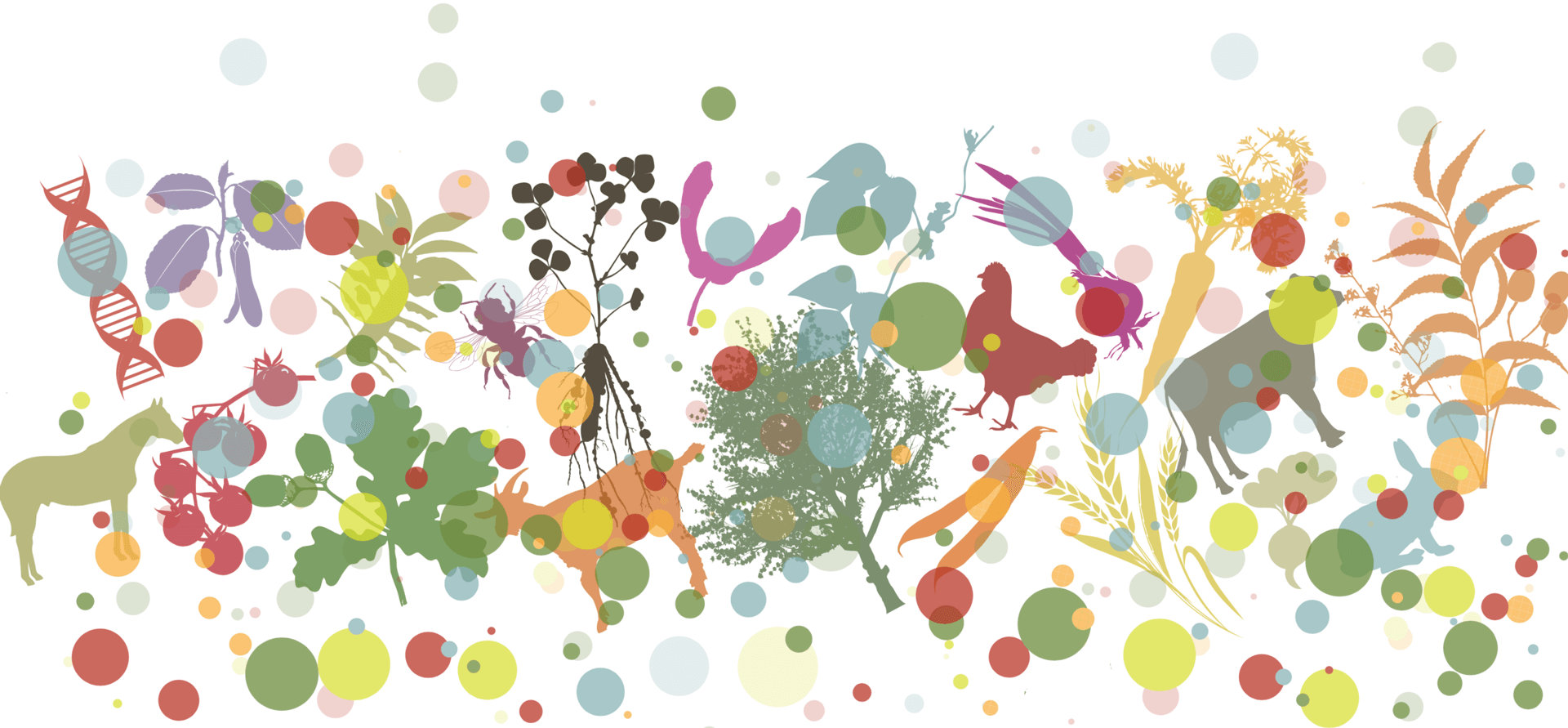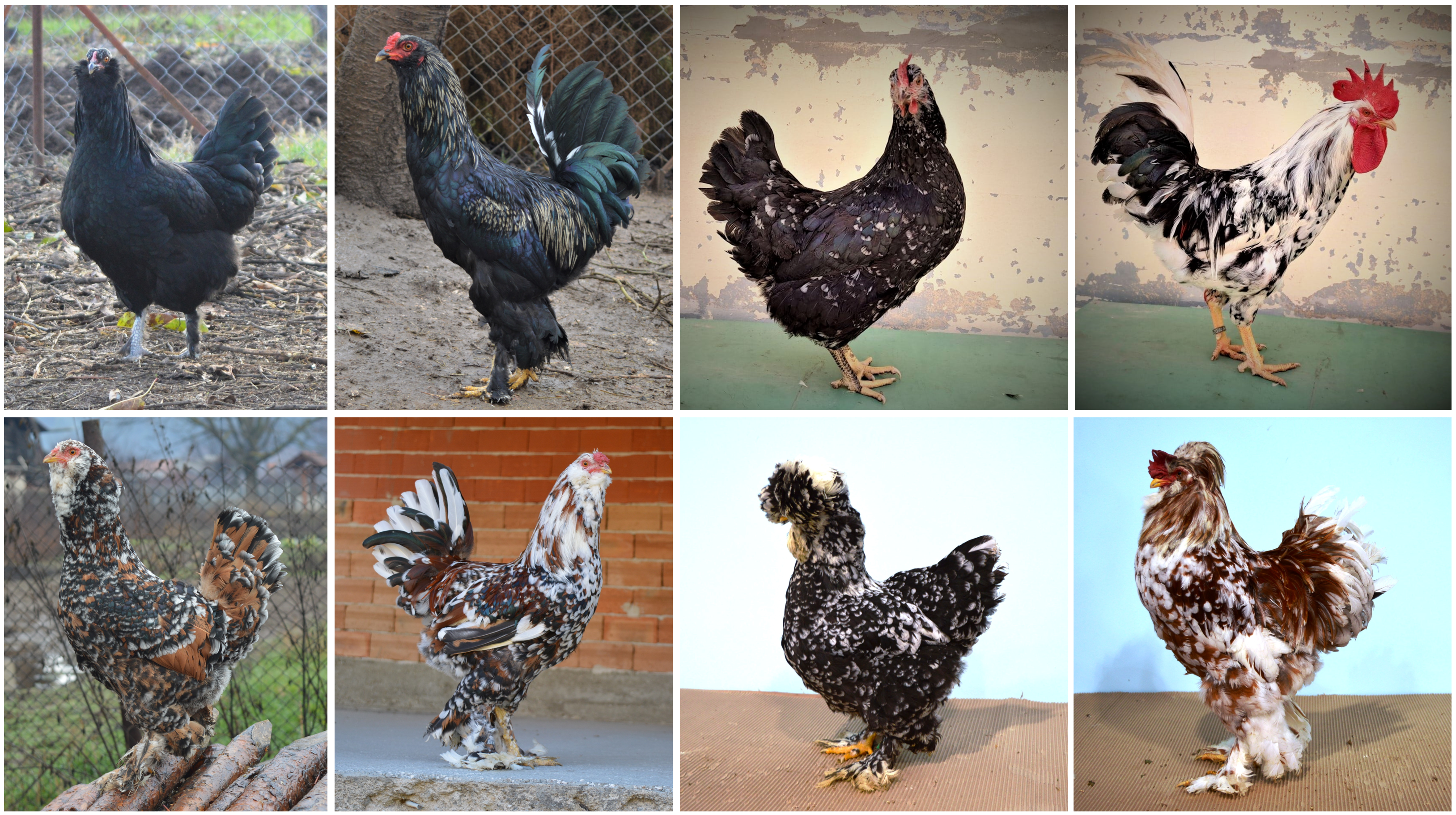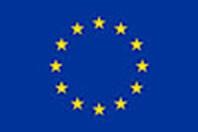Egg production characteristics of several Bulgarian chicken breeds
Main Article Content
Abstract
This study aimed to investigate and analyze the egg productivity of four Bulgarian chicken breeds, namely: Rhodope painted chicken (RPCh), Southwest Bulgarian chicken (SWBCh), Bulgarian longcrower (BL), and Struma chicken (SCh). The following traits were analyzed: age of sexual maturity (at 20% egg-laying intensity) (days); average daily feed intake (g); daily egg production and culled eggs (number); daily egg weight (g); livability (%). The following productive parameters were calculated: egg number per hen-housed; egg-laying intensity; feed conversion ratio (per kg of eggs); feed conversion per egg (g feed per egg); Egg Production Efficiency Index (EPEI). RPCh was identified as the earliest maturing group, reaching 20% egg-laying intensity at 157 days of age with the highest hen-housed egg production (223.9 eggs), whereas SCh exhibited the latest maturity, reaching this stage at 250 days of age and the lowest productivity (123.9 eggs). The highest average egg weight was recorded in the SCh group (58.0±٠.٥٤g), followed by the RPCh group (56.7±1.84g) and the BL group (56.0±1.68g), while the lowest average values were observed in the SWBCh group (50.9±0.68g). Based on the findings of this study, we can conclude that among all the tested Bulgarian chicken breeds, RPCh demonstrate the highest egg-laying potential. When compared to other purebred chickens, which are part of European genetic diversity, RPCh show superior performance in terms of age at sexual maturity, number of eggs produced per productive period, and egg weight.
Article Details

This work is licensed under a Creative Commons Attribution 4.0 International License.
Authors retain copyright of the articles published in Genetic Resources and grant the journal right of first publication with open access. All articles published in Genetic Resource are licensed under Creative Commons Attribution 4.0 International License (CC BY 4.0) that allows others to download, share and adapt the work for commercial and non-commercial purposes as long as proper attribution to the original article is given. Genetic Resources permits and encourages authors to post items submitted to the journal (including the publisher's final layout) on personal websites or institutional repositories after acceptance and/or publication, while providing bibliographic details that credit their publication in Genetic Resources.
APA. (2023). American Standard of Perfection: 45th edition (American Poultry Association), 406 p.
BDRG. (2006). Der Rassegeflügel-Standard für Europa in Farbe (Bund Deutscher Rassegeflügelzüchter e.V., Fürth), 848 p. (In German)
Bennion, N. L. and Warren, D. C. (1933). Temperature and its effect on egg size in the domestic fowl. Poultry Science, 12(2), 69-82. doi: https://doi.org/10.3382/ps.0120069 DOI: https://doi.org/10.3382/ps.0120069
Besari, F., Pandi, J., and Dom, M. (2017). Feed conversion efficiency and egg production of village chickens under improved feeding and management practices. In Paper presented at the 8th HUON Seminar: Celebrating 52 years of Nation Building – Embracing Challenges beyond 2017, University of Technology, Papua New Guinea.
Chebo, C., Betsha, S., and Melesse, A. (2022). Chicken genetic diversity, improvement strategies and impacts on egg productivity in Ethiopia: a review. World’s Poultry Science Journal, 78(3), 803–821. doi: https://doi.org/10.1080/00439339.2022.2067020 DOI: https://doi.org/10.1080/00439339.2022.2067020
Churchil, R. R. and Suresh. (2021). Current concepts in nutrition and feeding of hybrid layer chicken. Indian Journal of Veterinary and Animal Sciences Research, 50(6), 1–16.
EC (2023a). European Commision. Eggs - Market Situation Dashboard (Directorate-General for Agriculture and Rural Development), 16 p. Retrieved from https://agriculture.ec.europa.eu/system/files/2024-02/eggs-dashboard_en.pdf
EC (2023b). European Commission Delegated Regulation (EU) 2023/2465 of 17 August 2023 supplementing Regulation (EU) No 1308/2013 of the European Parliament and of the Council as regards marketing standards for eggs, and repealing Commission Regulation (EC) No 589/2008. Official Journal of the European Union, Document 32023R2465.
El-Sabrout, K., Aggag, S., and Mishra, B. (2022). Advanced practical strategies to enhance table egg production. Scientifica, 1393392. doi: https://doi.org/10.1155/2022/1393392 DOI: https://doi.org/10.1155/2022/1393392
Eurostat. (2024). Agricultural production - livestock and meat. Retrieved from https://ec.europa.eu/eurostat/statistics-explained/index.php?title=Agricultural_production_-_livestock_and_meat
FAO. (2024). Agricultural production statistics 2010–2023 (FAOSTAT Analytical Briefs, No. 96. Rome), 16 p. https://openknowledge.fao.org/handle/20.500.14283/cd3755en
Farooq, M., Mian, M. A., Durrani, F. R., and Syed, M. (2002). Feed consumption and efficiency of feed utilization by egg type layers for egg production. Livestock Research for Rural Development, 14(1).
Fidan, E. D., and Nazlıgül, A. (2012). The effect of cage position and density on some production traits in Denizli chickens. Animal Health, Production and Hygiene, 1, 31–37. (In Turkish)
Genchev, A. and Lukanov, H. (2025). Poultry farming (Trakia University Academic Press, Stara Zagora, Bulgaria), 278 p. (In Bulgarian)
Gerzilov, V. (2011). Egg productivity in some fowl strains from the National gene pool reared under bio-friendly conditions. Agricultural Sciences, 3(6), 105-112.
Gerzilov, V., Nikolov, A., Petrov, P., Bozakova, N., Penchev, G., & Bochukov, A. (2015). Effect of a dietary herbal mixture supplement on the growth performance, egg production and health status in chickens. Journal of Central European Agriculture, 16(2), 10–27. doi: https://doi.org/10.5513/JCEA01/16.2.1580 DOI: https://doi.org/10.5513/JCEA01/16.2.1580
Getabalew, M. and Negash, A. (2020). Effect of high temperature on body weight gain, egg production, and egg shell formation process in laying hen: A review. British Journal of Poultry Sciences, 9(2), 42-47. url: https://idosi.org/bjps/9(2)20/3.pdf
Giesbrecht, F. G. and Nordskog, A. W. (1963). Estimating age at sexual maturity from flock records. Poultry Science, 42(1), 83–87. doi: https://doi.org/10.3382/ps.0420083 DOI: https://doi.org/10.3382/ps.0420083
Henning, M., Ehling, C., Weigend, S., Fellmin, M., Feldmann, A., and Tiemann, I. (2017). Cryo reserve in the chicken (Project No. 10BM016 and -027). Final Report of a Model and Demonstration Project in the Field of Biological Diversity. Bund Dt. Rassegeflügelzüchter e.V./ Bruno-Dürigen-Institut bzw. Wissenschaftlicher Geflügelhof des BDRG. (In German)
Hrnčár, C., Gašparovič, M., Gálik, B., & Bujko, J. (2015). Egg traits, fertility and hatchability of Brahma, Cochin and Orpington chicken breeds. Scientific Papers: Animal Science and Biotechnologies, 48(2), 137–141.
Kamanli, S., Durmuş, I., Yalçın, S., Yıldırım, U. and Meral, Ö. (2015). Effect of prenatal temperature conditioning of laying hen embryos: Hatching, live performance and response to heat and cold stress during laying period. Journal of Thermal Biology, 51, 96–104. doi: https://doi.org/10.1016/j.jtherbio.2015.04.001 DOI: https://doi.org/10.1016/j.jtherbio.2015.04.001
Kato, H., Shimizuike, Y., Yasuda, K., Yoshimatsu, R., Yasuda, K. T., Imamura, Y., and Imai, R. (2022). Estimating production costs and retail prices in different poultry housing systems: Conventional, enriched cage, aviary, and barn in Japan. Poultry Science, 101(12), 102194. doi: https://doi.org/10.1016/j.psj.2022.102194 DOI: https://doi.org/10.1016/j.psj.2022.102194
Kaya, M. and Yıldız, M. A. (2014). Tavuğun evcilleştirilmesi ve Türkiye yerli tavuk ırkları. Tavukçuluk Araştırma Dergisi, 11(2), 21–28. (In Turkish)
Kilic, I. and Simsek, E. (2013). The effects of heat stress on egg production and quality of laying hens. Journal of Animal and Veterinary Advances, 12(1), 42-47. url: https://scispace.com/papers/the-effects-of-heat-stress-on-egg-production-and-quality-of-37n0064xod
Kim, D. H., Song, J. Y., Park, J., Kwon, B. Y. and Lee, K. W. (2023). The effect of low temperature on laying performance and physiological stress responses in laying hens. Animals, 13(24), 3824. doi: https://doi.org/10.3390/ani13243824 DOI: https://doi.org/10.3390/ani13243824
Kim, H.-R., Ryu, C., Lee, S.-D., Cho, J.-H., and Kang, H. (2024). Effects of Heat Stress on the Laying Performance, Egg Quality, and Physiological Response of Laying Hens. Animals, 14(7), 1076. doi: https://doi.org/10.3390/ani14071076 DOI: https://doi.org/10.3390/ani14071076
Kochish, I. I., Titov, V. Y., Nikonov, I. N., Brazhnik, E. A., Vorobyov, N. I., Korenyuga, M. V., Myasnikova, O. V., Dolgorukova, A. M., Griffin, D. K., and Romanov, M. N. (2023). Unraveling signatures of chicken genetic diversity and divergent selection in breed-specific patterns of early myogenesis, nitric oxide metabolism and post-hatch growth. Frontiers in Genetics, 13. doi: https://doi.org/10.3389/fgene.2022.1092242 DOI: https://doi.org/10.3389/fgene.2022.1092242
Li, D., Tong, Q., Shi, Z., Zheng, W., Wang, Y., Li, B. and Yan, G. (2020). Effects of cold stress and ammonia concentration on productive performance and egg quality traits of laying hens. Animals, 10(12), 2252. doi: https://doi.org/10.3390/ani10122252 DOI: https://doi.org/10.3390/ani10122252
Li, Y., Ma, R., Qi, R., Li, H., Li, J., Liu, W., Wan, Y., Li, S., Sun, Z., Xu, J., and Zhan, K. (2024). Novel insight into the feed conversion ratio in laying hens and construction of its prediction model. Poultry Science, 103(10), 104013. doi: https://doi.org/10.1016/j.psj.2024.104013 DOI: https://doi.org/10.1016/j.psj.2024.104013
Liu, Z., Yang, N., Yan, Y., Li, G., Liu, A., Wu, G., and Sun, C. (2019). Genome-wide association analysis of egg production performance in chickens across the whole laying period. BMC Genetics, 20, 67. doi: https://doi.org/10.1186/s12863-019-0771-7 DOI: https://doi.org/10.1186/s12863-019-0771-7
Lukanov, H. (2012). Balkan breeds and breed groups (Parts I & II). Aviculture Europe, 8(6), 1–16.
Lukanov, H. (2017a). Exhibition and ornamental poultry breeding (Kota Publ. House, Stara Zagora, Bulgaria), 528 p. (In Bulgarian)
Lukanov, H. (2017b). Balkan longcrowing chicken breeds. Aviculture Europe, 13(3), 1-7.
Lukanov, H. & Pavlova, I. (2021). Morphological and morphometric characterization of Bulgarian local chicken breed - Southwest Bulgarian dzinka. Agricultural Science and Technology, 13(2), 147-151. doi: https://doi.org/10.15547/ast.2021.02.024 DOI: https://doi.org/10.15547/ast.2021.02.024
Lukanov, H. (2023). Incubation characteristics of some Bulgarian chicken breeds. Bulgarian Journal of Animal Husbandry, 60(6), 44-52. doi: https://doi.org/10.61308/TZDV8636 (In Bulgarian) DOI: https://doi.org/10.61308/TZDV8636
Lukanov, H., Genchev, A., and Petrov, T. (2023). The Egg Production Efficiency Index (EPEI) as an economic indicator for measuring poultry egg production. Bulgarian Journal of Agricultural Science, 29(4), 747–751.
Lukanov, H., Pavlova, I., and Genchev, A. (2021). Bulgarian chicken breeds - part of the world's genetic diversity: I. Standard breeds. In International scientific and practical conference "Innovative approaches to increasing the productivity of farm animals", Kuban State Agrarian University named after I. T. Trubilin, 359–365. (In Russian).
Lukanov, H., Petrov, P., Genchev, A., Halil, E. and Ismail, N. (2016). Productive performance of Easter egger crosses of Araucana and Schijndelaar roosters with white Leghorn hens. Trakia Journal of Sciences, 1, 72–79. url: http://tru.uni-sz.bg/tsj/Vol.14,%20N%201,%202016/H.Lukanov%20(1).pdf DOI: https://doi.org/10.15547/tjs.2016.01.010
Malomane, D. K., Simianer, H., Weigend, A., Reimer, C., Schmitt, A. O., and Weigend, S. (2019). The SYNBREED chicken diversity panel: A global resource to assess chicken diversity at high genomic resolution. BMC Genomics, 20, 345. doi: https://doi.org/10.1186/s12864-019-5727-9 DOI: https://doi.org/10.1186/s12864-019-5727-9
MAPA. (2025). Pita Pinta: Production data (Ministerio de Agricultura, Pesca y Alimentación). (In Spanish) Retrieved from https://www.mapa.gob.es/es/ganaderia/temas/zootecnia/razas-ganaderas/razas/catalogo-razas/aviar/pita-pinta/datos_productivos.aspx
Nguyen Van, D., Moula, N., Moyse, E., Do Duc, L., Vu Dinh, T., and Farnir, F. (2020). Productive performance and egg and meat quality of two indigenous poultry breeds in Vietnam, Ho and Dong Tao, fed on commercial feed. Animals, 10(3), 408. doi: https://doi.org/10.3390/ani10030408 DOI: https://doi.org/10.3390/ani10030408
Nikolov, A. and Gerzilov, V. (2011). Productivity of newly selected AN heavy chicken line. Agricultural Sciences, 3(6), 99–104.
OECD-FAO. (2017). Meat: OECD-FAO agricultural outlook 2017-2026 (Organisation for Economic Co-operation and Development & Food and Agriculture Organization of the United Nations), 142 p. doi: https://doi.org/10.1787/agr_outlook-2017-en
OECD-FAO. (2024). OECD-FAO Agricultural Outlook 2024-2033 (OECD Publishing, Paris/FAO, Rome), 335 p. doi: https://doi.org/10.1787/4c5d2cfb-en
Özdemir, D., Özdemir, E. D., De Marchi, M., and Cassandro, M. (2013). Conservation of local Turkish and Italian chicken breeds: A case study. Italian Journal of Animal Science, 12(2), e49. doi: https://doi.org/10.4081/ijas.2013.e49 DOI: https://doi.org/10.4081/ijas.2013.e49
Özdoğan, N., Gürcan, İ. S., and Bilgen, A. (2007). Egg weight and egg weight repeatability of Denizli and Gerze local hen breeds. Lalahan Hayvancılık Araştırma Enstitüsü Dergisi, 47(1), 21–28. (In Turkish)
Pavlova, I. (2024). Bulgaria as a part of the world’s poultry genetic resources – Bulgarian chicken breeds. Danubian Animal Genetic Resources, 9(1), 16. doi: https://doi.org/10.59913/dagr.2024.17293 DOI: https://doi.org/10.59913/dagr.2024.17293
Pavlova, I. and Lukanov, H. (2023). Exterior characteristics of some Bulgarian chicken breeds. In Proceedings of the Scientific Conference with International Participation Animal Science – Challenges and Innovations, Sofia, Bulgaria. 118–127.
Pavlova, I. and Lukanov, H. (2024). Population status and distribution of Bulgarian indigenous chicken breeds. Journal of Central European Agriculture, 25(2), 313–324. doi: https://doi.org/10.5513/JCEA01/25.2.4204 DOI: https://doi.org/10.5513/JCEA01/25.2.4204
Phuong, L. T. and Nha, P. T. (2024). Reproductive performance of local Noi chicken over two generations in the Mekong Delta of Vietnam. Advances in Animal and Veterinary Sciences, 12(8), 1596–1603. DOI: https://doi.org/10.17582/journal.aavs/2024/12.8.1596.1603
Poku, R. A., Agyemang-Duah, E., Donkor, S., Ayizanga, R. A., Osei-Amponsah, R., Rekaya, R. and Aggrey, S. E. (2024). Changes in rectal temperature as a means of assessing heat tolerance and sensitivity in chickens. Tropical Animal Health and Production, 56(9), 391. doi: https://doi.org/10.1007/s11250-024-04242-1 DOI: https://doi.org/10.1007/s11250-024-04242-1
Preisinger, R. (2021). Commercial layer breeding: Review and forecast. Züchtungskunde, 93(3), 210–228. (In German)
Ribeiro, B. P. V., Yanagi Junior, T., Duarte de Oliveira, D., Ribeiro de Lima, R. and Zangeronimo, M. G. (2020). Thermoneutral zone for laying hens based on environmental conditions, enthalpy and thermal comfort indexes. Journal of Thermal Biology, 93, 102678. doi: https://doi.org/10.1016/j.jtherbio.2020.102678 DOI: https://doi.org/10.1016/j.jtherbio.2020.102678
Roberts, V. (2008). British poultry standards: 6th edition (Wiley-Blackwell), 480 p.
Różewicz, M. and Kaszperuk, K. (2018). Long-crowing and long-tailed chickens: Characteristics of the breeds. Wiadomości Zootechniczne, 56(4), 181–199.
Schreiter, R. and Freick, M. (2023). Laying performance characteristics, egg quality, and integument condition of Saxonian chickens and German Langshan bantams in a free-range system. Journal of Applied Poultry Research, 32(3), 100359. doi: https://doi.org/10.1016/j.japr.2023.100359 DOI: https://doi.org/10.1016/j.japr.2023.100359
Teneva, A., Gerzilov, V., Lalev, M., Lukanov, H., Mincheva, N., Oblakova, M., Petrov, P., Hristakieva, P., Dimitrova, I., and Periasamy, K. (2015). Current status and phenotypic characteristics of Bulgarian poultry genetic resources. Animal Genetic Resources, 56, 19-27. doi: https://doi.org/10.1017/S2078633615000016 DOI: https://doi.org/10.1017/S2078633615000016
Thiruvenkadan, A. K., Panneerselvam, S., and Rabakaran, R. (2010). Layer breeding strategies: An overview. World's Poultry Science Journal, 66(2), 477–502. doi: https://doi.org/10.1017/S0043933910000553 DOI: https://doi.org/10.1017/S0043933910000553
Torki, M., Akbari, M. and Kaviani, K. (2015). Single and combined effects of zinc and cinnamon essential oil in diet on productive performance, egg quality traits, and blood parameters of laying hens reared under cold stress condition. International Journal of Biometeorology, 59(9), 1169–1177. doi: https://doi.org/10.1007/s00484-014-0928-z DOI: https://doi.org/10.1007/s00484-014-0928-z
USDA FAS. (2024). Livestock and poultry: World markets and trade (United States Department of Agriculture, Foreign Agricultural Service), 15 p. https://www.fas.usda.gov/sites/default/files/2024-07/Livestock_poultry.pdf
Xu, H., Zeng, H., Luo, C., Zhang, D., Wang, Q., Sun, L., Yang, L., Zhou, M., Nie, Q., and Zhang, X. (2011). Genetic effects of polymorphisms in candidate genes and the QTL region on chicken age at first egg. BMC Genetics, 12, 33. doi: https://doi.org/10.1186/1471-2156-12-33 DOI: https://doi.org/10.1186/1471-2156-12-33
Yoshida, N., Fujita, M., Nakahara, M., Kuwahara, T., Kawakami, S.-I., and Bungo, T. (2011). Effect of high environmental temperature on egg production, serum lipoproteins, and follicle steroid hormones in laying hens. The Journal of Poultry Science, 48(3), 207–211. doi: https://doi.org/10.2141/jpsa.010126 DOI: https://doi.org/10.2141/jpsa.010126







 This journal has been conceived as part of the
This journal has been conceived as part of the